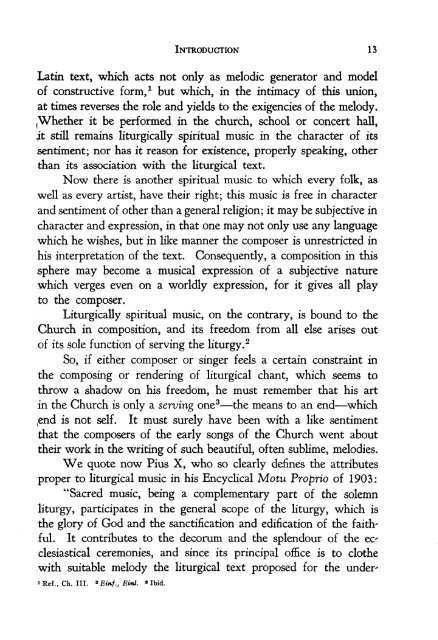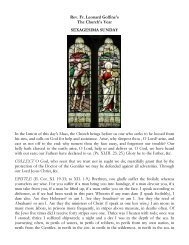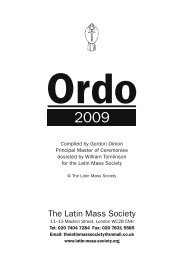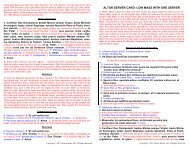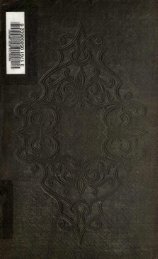The Spirit of Gregorian Chant - Church Music Association of America
The Spirit of Gregorian Chant - Church Music Association of America
The Spirit of Gregorian Chant - Church Music Association of America
You also want an ePaper? Increase the reach of your titles
YUMPU automatically turns print PDFs into web optimized ePapers that Google loves.
INTRODUCTION 13<br />
Latin text, which acts not only as melodic generator and model<br />
<strong>of</strong> constructive form, 1 but which, in the intimacy <strong>of</strong> this union,<br />
at times reverses the role and yields to the exigencies <strong>of</strong> the melody.<br />
^Whether it be performed in the church, school or concert hall,<br />
it still remains liturgically spiritual music in the character <strong>of</strong> its<br />
sentiment; nor has it reason for existence, properly speaking, other<br />
than its association with the liturgical text.<br />
Now there is another spiritual music to which every folk, as<br />
well as every artist, have their right; this music is free in character<br />
and sentiment <strong>of</strong> other than a general religion; it may be subjective in<br />
character and expression, in that one may not only use any language<br />
which he wishes, but in like manner the composer is unrestricted in<br />
his interpretation <strong>of</strong> the text. Consequently, a composition in this<br />
sphere may become a musical expression <strong>of</strong> a subjective nature<br />
which verges even on a worldly expression, for it gives all play<br />
to the composer.<br />
Liturgically spiritual music, on the contrary, is bound to the<br />
<strong>Church</strong> in composition, and its freedom from all else arises out<br />
<strong>of</strong> its sole function <strong>of</strong> serving the liturgy. 2<br />
So, if either composer or singer feels a certain constraint in<br />
the composing or rendering <strong>of</strong> liturgical chant, which seems to<br />
throw a shadow on his freedom, he must remember that his art<br />
in the <strong>Church</strong> is only a serving one 3 —the means to an end—which<br />
(end is not self. It must surely have been with a like sentiment<br />
that the composers <strong>of</strong> the early songs <strong>of</strong> the <strong>Church</strong> went about<br />
their work in the writing <strong>of</strong> such beautiful, <strong>of</strong>ten sublime, melodies.<br />
We quote now Pius X, who so clearly defines the attributes<br />
proper to liturgical music in his Encyclical Motu Proprio <strong>of</strong> 1903:<br />
"Sacred music, being a complementary part <strong>of</strong> the solemn<br />
liturgy, participates in the general scope <strong>of</strong> the liturgy, which is<br />
the glory <strong>of</strong> God and the sanctification and edification <strong>of</strong> the faithful.<br />
It contributes to the decorum and the splendour <strong>of</strong> the ec<br />
clesiastical ceremonies, and since its principal <strong>of</strong>fice is to clothe<br />
with suitable melody the liturgical text proposed for the under'<br />
i Ref., Ch. III. *Einf.,Einl. » Ibid.


